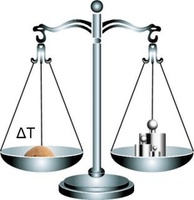The Technology of Thermal Analysis

Thermal analysis is a technique for the study of material properties. The material is observed under the artificial temperature control conditions. And the researchers can observe the physical or chemical changes, and the relationship among temperature, and other characteristics . There are several thermal analysis techniques in the modern world, they are: Thermogravimetric analysis (TGA), Differential thermal analysis (DTA), Differential scanning calorimetry (DSC), and the mechanical related analysis, such as Dilatometry and Thermomechanical Analysis (TMA), and Dynamic Mechanical Analysis (DMA).
The current thermal analysis techniques, have been widely used for general chemical detection and analysis, pharma materials, polymers, metals, food, PCB circuit boards and other applications. According to different materials to perform component analysis, the percent crystallinity, purities, thermal stability analysis, polymorphism, etc.
In ACTTR, We Act on Transition and Radiation!
Thermogravimetric analysis (TGA), the sample is placed in a particular environment to control the temperature , And the change in weight of the sample is observed .
Differential Thermal Analysis (DTA), the test sample and control group samples were subjected to the same heating process. And the temperature difference between the two substances is observed. And then, analyze the characteristics of the sample .
Differential Scanning Colorimetry (DSC). A similar approach with the DTA , but measuring the sample with the controlled sample, when both the heating rate and the temperature reached the same level, and then analyze the relationship among these factors.
For these thermal analysis methods, instrument manufacturers mostly combines the different measurement methods and integrate the functions in the same device. At the same time, all the relevant information provides to researchers, in order to accelerate the process of the experiment.
Dilatometry and Thermomechanical Analysis (TMA), measure the volume change at a temperature, and observe the change of deformation and changes in body characteristics.
Dynamic Mechanical Analysis (DMA), and Dynamic Mechanical Thermal Analysis (DMTA), the technique is used to observe the molten polymer in the state of a variety of mechanical properties of conditions (such like force , stress , strain relationship , frequency , and temperature ).
ACTTR is the most aggressive & the most professional instrument of spectrometer distributor, agent, reseller, in Taiwan.


